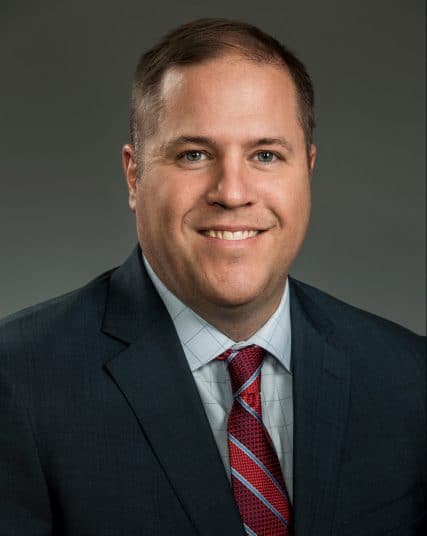
Dr. Dart is a fellowship trained and board-certified orthopaedic surgeon specializing in hip and pelvic surgery including joint replacement, hip arthroscopy and fracture care. In addition he specializes in fractures of the shoulder, arm, elbow, forearm, wrist, hip, pelvis, femur, knee, lower leg and ankle.
Dr. Dart is from Wichita, KS and obtained his medical degree and completed his residency at the University of Kansas. He returned to Wichita after completing his fellowship at Vanderbilt University in Nashville, TN in 2007. He joined the AOA practice in 2009. He was the first surgeon in Wichita to utilize the direct anterior approach for total hip replacements. He is also one of the few surgeons in the area who perform hip arthroscopies.
In addition to his practice Dr. Dart serves at the Director of Orthopaedic Trauma at Via Christi. He is also the Program Director of the Orthopaedic Residency Program for the KU School of Medicine in Wichita. He enjoys going to conferences, staying up to date on the latest techniques in orthopaedics, teaching and ensuring our future orthopaedic surgeons are well prepared to provide quality care to their future patients.
Protocol & Quick Links:
Locations:
AOA - East Clinic: Tuesday & Friday AM
Services:
Subspecialties:
Adult Fracture Care,
Hip & Pelvic Surgery,
Hip Replacement and Hip Arthroscopy,
Orthopaedic Fracture Care,
Pediatric Fracture Care
Education & Certifications:
Hometown:
Wichita, KS
Fellowship:
Orthopaedic Trauma
Vanderbilt University Medical Center
Nashville, TN
Residency:
University of Kansas School of Medicine
Wichita, KS
Medical Degree:
University of Kansas School of Medicine
Wichita, KS
Board Certification:
American Board of Orthopaedic Surgery
License:
Kansas Board of Healing Arts since 2004
Leadership Positions:
Director of Orthopaedic Trauma
Via Christi Health Systems
Program Director, Orthopaedic Residency Program
KU School of Medicine, Wichita
Clinical Assistant Instructor:
University of Kansas School of Medicine
Residency Training Program


